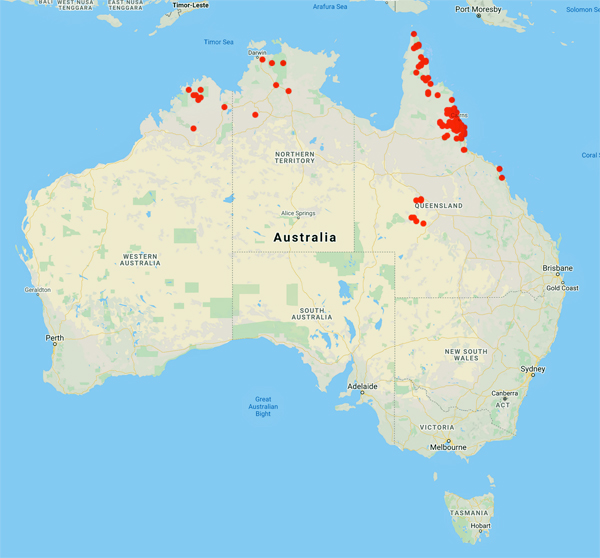
Council of Heads of Australasian Herbaria
Australian National Herbarium
Biographical Notes
 |
Council of Heads of Australasian Herbaria |
 Cooper, William T. (Bill) (1934 - 2015 )
Cooper, William T. (Bill) (1934 - 2015 )Born Newcastle, New South Wales, on 6 April 1934; died Malanda, Queensland, on 10 May 2015.
Source: Obituary in the Telegraph newspaper (UK), 25 May 2015.
Source: H.Hewson Australia - 300 Years of Botanical Illustration (1999)
William T. Cooper first gained artistic prominence for his ornithological illustrations in A Portfolio of Australian Birds. His international reputation was firmly established in 1973 with the publication of Parrots of the World and today Bill's paintings are housed in public galleries, government institutions and private collections throughout the world.
Bill's talent for combining scientific accuracy with vibrant artistic technique was formally recognized in 1990 when the Academy of Natural Sciences of Philadelphia (USA) awarded him the gold medal for his 'artistic endeavours and life's work which have contributed to mankind's better understanding and appreciation of living things'. He was the first Australian to receive this prestigious award and in 1994 was awarded the Order of Australia (AO) for his contribution to Art and Ornithology.
The 1,236 fruits illustrations reproduced in his book Fruits of the Rainforest show William T. Cooper's dedication to the world of nature. He capturesthe finest details - from tiny spines on pods to fibres of palm fruits and imperfections created by living creatures of the rainforest. Each painting shows the ranges in size, shape and colour of the fruit as well as a cross-section exposing the distinctive colour and texture variations of the seed. It has been a rare privilege to publish art of such magnitude, skill and beauty.
Source: extracted from: http://www.landsboroughgalleries.com.au/category/29/default.asp (10/2/2015)
Photo Portrait: extracted from http://www.williamtcooper.com.au/about/ (10/2/2015)
SEE OBITUARY:
More than a portrait painter to the birds -
William T. Cooper (1934–2015) by John Clarkson
Australasian Systematic Botany Society Newsletter 162-163 (March-June 2015) p.37-41
( https://asbs.org.au/newsletter/pdf/15-march-june-162-3.pdf )
Data from 196 specimens
